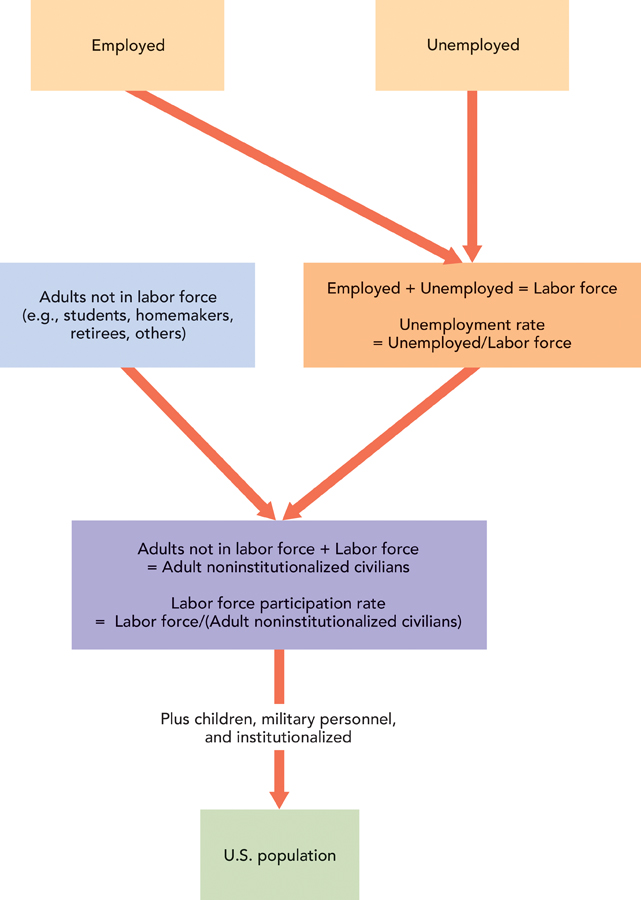30 Unemployment and Labor Force Participation
223
CHAPTER OUTLINE
Defining Unemployment
Frictional Unemployment
Structural Unemployment
Cyclical Unemployment
Labor Force Participation
Takeaway
Thirty-six thousand travel agents lost their jobs on November 10, 1999. Actually, it didn’t happen quite that fast, but when Expedia.com went public, there were 124,000 travel agents in the United States and by 2006 there were fewer than 88,000. Even though tourism is increasing, travel agents are disappearing as more people book their travel online.
The disappearance of the travel agent represents a recurring story in American history. Many jobs have disappeared—blacksmiths, chimney sweeps, and darkroom technicians, for example, are no longer in demand. Employment in other fields has greatly declined. For example, in 1910 there were 11.5 million farm workers in the United States; today there are less than one million. New jobs, however, have replaced old jobs. There are now nearly 1 million jobs in the “App economy,” jobs related to writing apps for mobile phones and devices. Before the introduction of the iPhone in 2007, there were zero jobs in this industry. Jobs are growing rapidly in high-tech areas like software engineering and the biosciences, but a wealthier society also means more and better paying jobs in professions that have been around for a long time. Today, for example, there are over 200,000 professional athletes, coaches, umpires, and related workers in the United States—more than any other time in history.
A growing economy is a changing economy and some unemployment is a necessary consequence of economic growth. The unemployment rate in France, however, has hovered around 10% for several decades. High and long-lasting unemployment is unlikely to be caused by economic growth. During a recession, unemployment increases quickly and in many different industries at once and that too is unlikely to be caused by economic growth. Thus, there are different types of unemployment with different causes.
Figure 30.1 below illustrates the organization of this chapter. We are going to start at the top with the issue that is most prominent in the economics and business news, namely unemployment. We explain how unemployment is defined and then the different types of unemployment and their causes.

Source: Bureau of Labor Statistics.
224
Don’t forget, however, that many individuals neither have a job nor are looking for work—these individuals are not part of the labor force. As we move down the tree, we will ask: Why do some people choose to be in the labor force while others do not? Why is it, for example, that most women are in the (paid) labor force today even though this was uncommon in the 1950s? And why is labor force participation for some workers much higher in some countries than in others? The topic of labor force participation makes up the second half of the chapter. And what about total population, at the very bottom of this structure? For that you must take a demography course, but you’ll even find a brief discussion of birth control at the close of the chapter.
225